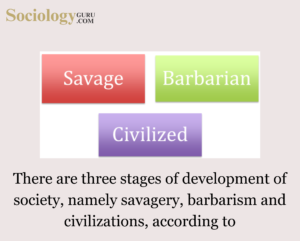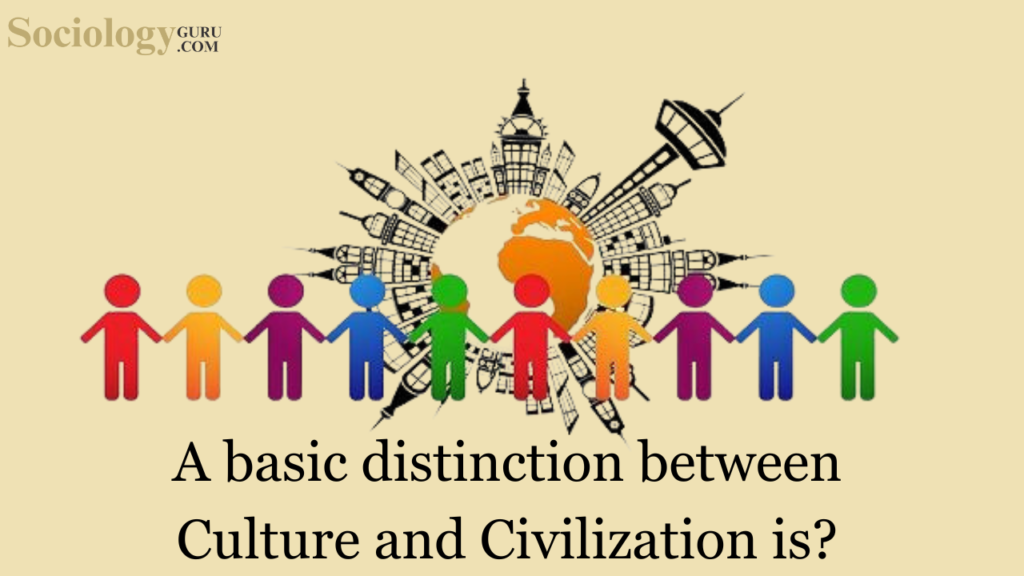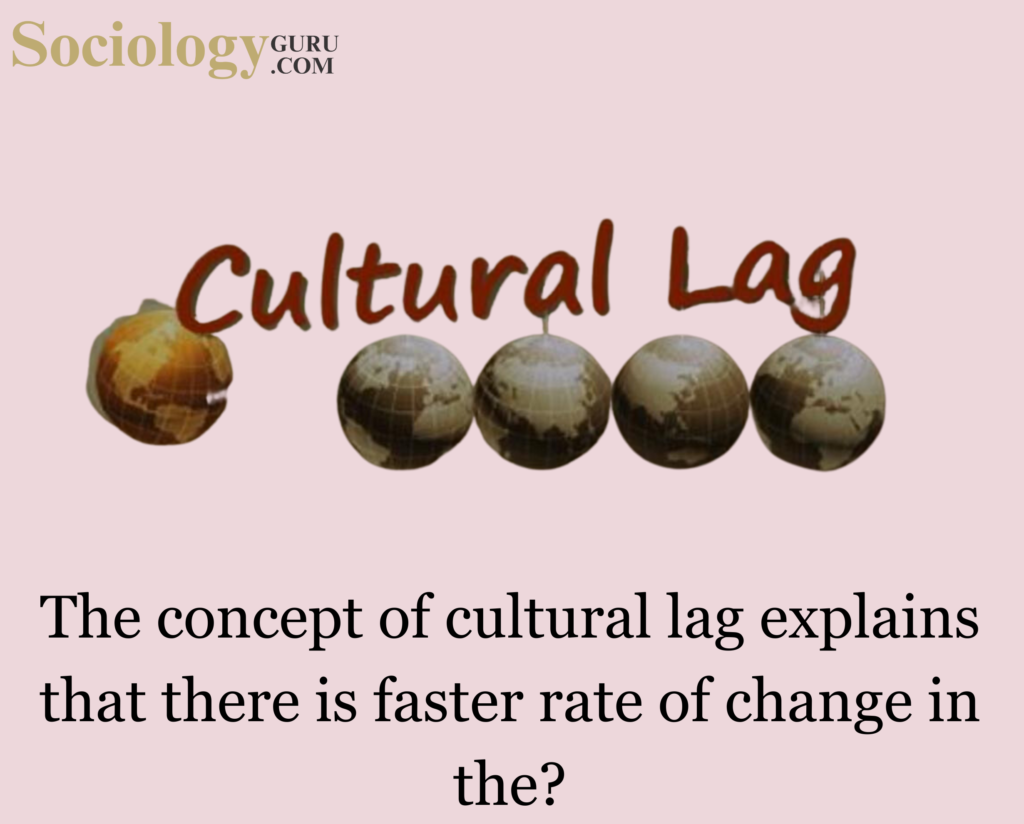Question: There are three stages of development of society, namely savagery, barbarism and civilizations according to?
- Darwin
- Morgan
- Spencer
- Bachofen
Answer: (2)The question directs our attention towards the nuanced exploration of societal development stages – savagery, barbarism, and civilization – and requests identification of the thinker who proposed this classification. The answer, Morgan, unveils a canvas painted with the intricate strokes of cultural evolutionism. Lewis Henry Morgan’s framework presents a linear progression of human societies, categorizing them into distinct stages based on technological advancements and sociocultural complexities. However, to fully appreciate the depth of Morgan’s perspective and its implications, one must embark on a meticulous journey through the realms of historical anthropology, ethnocentrism, and the evolving paradigms of cultural development. Morgan’s portrayal of societal evolution seems to be a reflection of the prevalent attributes of his contemporary society, the United States of the 1800s. The characteristics delineating ‘civilization’ in his model seemingly resonate with the societal norms, values, and technological advancements of 19th-century America, illustrating a potent manifestation of ethnocentrism. Morgan’s theory, in its essence, is imbued with the notion that the cultural attributes and technological prowess of his society represented the pinnacle of human societal evolution. An exploration of Morgan’s model necessitates a critical examination of its ethnocentric underpinnings. His perspective, although ground breaking in its time, appears to be a mirror reflecting the societal norms and hierarchies prevalent within his contextual environment. For instance, the incorporation of patriarchy as a hallmark of civilization reveals the theory’s alignment with the predominant societal structures of 19th-century America. Such ethnocentrism subtly perpetuates the idea that the sociocultural fabric of Morgan’s society epitomizes the zenith of human cultural evolution. Furthermore, Morgan’s classification, while pioneering, presents challenges when subjected to the rigorous scrutiny of historical and archaeological validation. His attempts to categorize contemporary societies into various stages of his evolutionary model were met with the constraints of limited archaeological and anthropological data. This led to classifications that, upon closer examination, might seem incongruent with the complexities and nuanced developmental trajectories of the societies under consideration. Such discrepancies illuminate the potential pitfalls of overarching classifications within the realms of cultural and societal evolution. Morgan’s theory also ignites discussions surrounding the notion of ‘progress’ within the anthropological discourse. His portrayal of societal evolution carries an implicit assertion of progress, advocating a journey towards a predetermined pinnacle of civilization. However, this presents an avenue for critical contemplation. What constitutes ‘progress’ is intricately intertwined with subjective cultural values and perceptions, casting shadows of relativism upon the universal applicability of Morgan’s evolutionary stages. In the contemporary landscape, the echoes of Morgan’s cultural evolutionism reverberate within prevalent societal perceptions. A pervasive belief exists in the inevitability of societal progress along predetermined paths, culminating in societal structures that resonate with the attributes of developed, industrialized nations. This perspective manifests in classifications such as the ‘first’, ‘second’, and ‘third’ world, symbolizing various stages of societal and cultural evolution. Such classifications subtly perpetuate a linear progression paradigm, echoing the foundational principles of Morgan’s cultural evolutionism. In conclusion, Lewis Henry Morgan’s theory offers a rich tapestry of insights, discussions, and critical contemplations within the realms of societal development and cultural evolution. His stages of savagery, barbarism, and civilization invite us on a journey through the historical landscapes of anthropological thought, ethnocentric reflections, and the evolving paradigms of progress and development. Morgan’s contribution stands as a monumental pillar within anthropological discourse, providing fertile grounds for exploration, critique, and the continuous evolution of perspectives on human societies and cultures. |
Take a Quick Sociology Quiz to measure your Performance
Frequently Asked Questions:
1. Question: Define the term “ethnic movement” and provide an example from India.
Answer: An ethnic movement refers to a collective effort by a group sharing common cultural, linguistic, or religious traits, seeking to assert their identity and rights; an example from India is the Khalistan Movement in Punjab.
2. Question: Identify the main objectives behind the Gorkhaland ethnic movement.
Answer: The Gorkhaland ethnic movement primarily seeks to establish a separate state for India’s Nepali-speaking population in the Darjeeling region, advocating for linguistic and cultural recognition and political autonomy.
3. Question: What was the Operation Blue Star, and which ethnic movement was it related to?
Answer: Operation Blue Star was a military action in 1984, aiming to remove Sikh militants hiding in the Golden Temple in Amritsar; it is related to the Khalistan movement, which sought a separate Sikh country.
4. Question: Mention a critical factor that triggered the emergence of ethnic movements in India, as discussed by Dipankar Gupta.
Answer: Dipankar Gupta emphasized that ethnicity is fundamentally a political process, wherein caste and religion, the key components of identity formation, are politicized by leaders for vested interests.
5. Question: What were the primary reasons for the Assam Ethnicity conflicts involving Bodo tribals and Bengali Muslim settlers?
Answer: The Assam Ethnicity conflicts primarily stemmed from issues related to immigration, land rights, and resource allocation, leading to clashes, riots, and evolving relationships among indigenous communities to address challenges.
6. Question: Briefly describe the role of the Dravidian Movement in terms of caste and societal structure.
Answer: The Dravidian Movement, led notably by E.V. Ramasamy, aimed to establish an egalitarian society, focusing on anti-Brahmanism and advocating for equal rights for backward castes, while also introducing reforms like self-respect marriages.
7. Question: Name the prominent ethnic movements in North-East India and specify one common objective.
Answer: Prominent ethnic movements in North-East India include the Nagas’ and Mizos’ struggles; a common objective was to gain autonomy and recognition for their distinct tribal identities and cultural uniqueness.
8. Question: What is the key argument of Gail Omveldt regarding traditional Indian society and multiculturalism?
Answer: Gail Omveldt opposed romanticizing traditional Indian society, arguing that hierarchy has always dominated it and dismissing the notion that multiculturalism is an intrinsic feature of Indian society as a myth.
9. Question: Briefly explain the social hierarchy factor as a contributing element to ethnic movements as suggested by Olzak.
Answer: Olzak suggests that the construction of hierarchies among ethnic communities, which often leads to the suppression of one group by another, is a key factor that can instigate social and ethnic movements.
10. Question: Identify one consequence of the unequal economic development factor within the context of ethnic movements in India.
Answer: One consequence of unequal economic development is the marginalization and underdevelopment of certain groups, leading to feelings of alienation and sometimes initiating ethnic movements as these groups strive for equality and recognition.
To master these intricacies and fare well in the Sociology Syllabus, aspiring sociologists might benefit from guidance by the Best Sociology Teacher and participation in the Best Sociology Coaching. These avenues provide comprehensive assistance, ensuring a solid understanding of sociology’s diverse methodologies and techniques.
META TAGS:
Why Vikash Ranjan’s Classes for Sociology?
Proper guidance and assistance are required to learn the skill of interlinking current happenings with the conventional topics. VIKASH RANJAN SIR at SOCIOLOGY GURU guides students according to the Recent Trends, making him the Best Sociology Teacher for Sociology.
At Sociology Guru, the Best Sociology Coaching platform, we not only provide the best study material and applied classes for Sociology but also conduct regular assignments and class tests to assess candidates’ writing skills and understanding of the subject.
Choose The Best Sociology Teacher for your Preparation?
To master these intricacies and fare well in the Sociology Syllabus, aspiring sociologists might benefit from guidance by the Best Sociology Teacher and participation in the Best Sociology Coaching. These avenues provide comprehensive assistance, ensuring a solid understanding of sociology’s diverse methodologies and techniques. Sociology, Social theory, Best Sociology Teacher, Best Sociology Coaching, Sociology Syllabus.
Best Sociology Teacher, Sociology Syllabus, Sociology, Sociology Coaching, Best Sociology Coaching, Best Sociology Teacher, Sociology Course, Sociology Teacher, Sociology Foundation, Sociology Foundation Course, Sociology CUET, Sociology for IAS, Sociology for UPSC, Sociology for BPSC, Sociology for UGC NET, Sociology for JPSC,
Follow us :
KEYWORD: – Namely Savagery, Namely Savagery, Namely Savagery, Namely Savagery Namely Savagery Namely Savagery Namely Savagery, Civilizations, Society, Namely Savagery, Namely Savagery, Namely Savagery CUET, MA CUET SOCIOLOGY, MA CUET SOCIOLOGY



